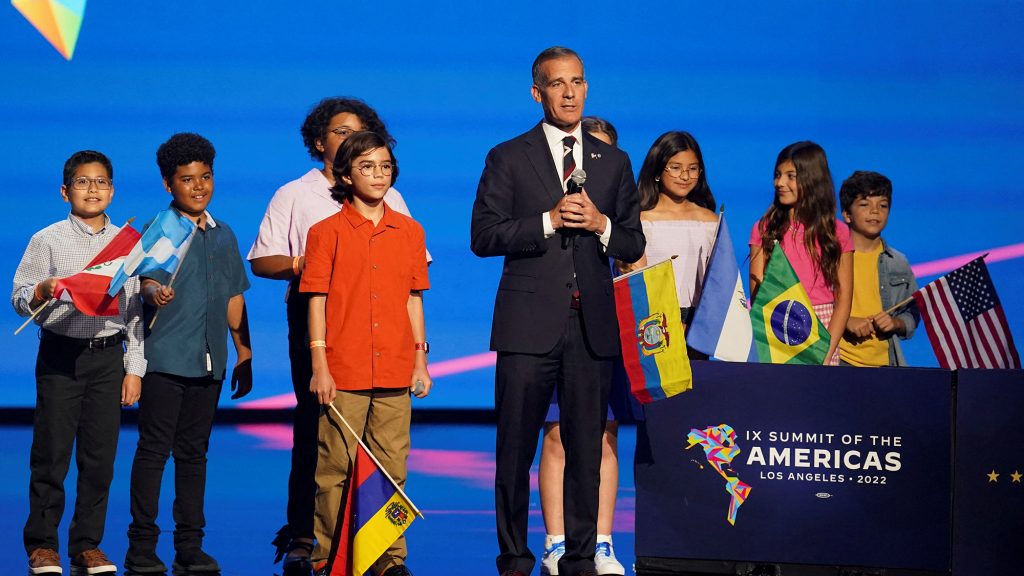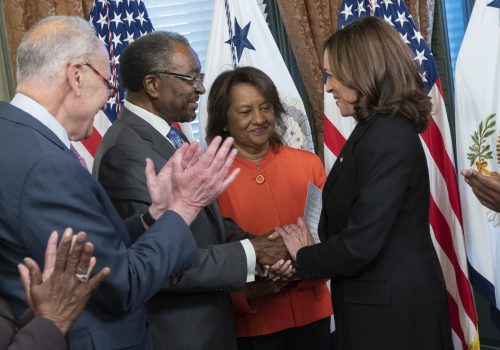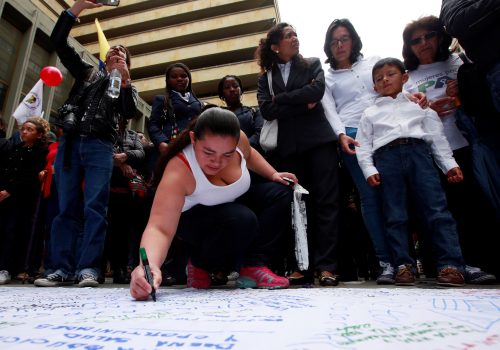Last month at the Ninth Summit of the Americas, US Secretary of State Antony Blinken announced that the United States will host a Cities Summit of the Americas in Denver, Colorado in April 2023. Blinken also launched the Cities Forward Initiative, a knowledge-sharing and capacity-building program that connects cities so that they can work together to tackle issues like sustainability and climate resilience.
These two initiatives underscore the increasingly prominent role of US cities in global affairs and outline a new vision of foreign policy that strengthens alliances from the subnational to international level. By renewing focus on city diplomacy, the commitments have the potential to revitalize relations across the Western Hemisphere and re-center US foreign policy on the needs of local communities.
But to ensure that these commitments are not one-off occurrences, the White House and State Department should introduce institutional reforms to support subnational government leaders across the country: first, by providing a roadmap for mayors to establish city offices of international relations; and second, by establishing a State Department office to advise and support regional initiatives.
Metropolises matter
Cities are hubs of economic growth and innovation that punch above their weight and attract the next generation of talent. The economies of many US cities are larger than those of entire countries: New York City’s gross domestic product (GDP) in 2021 was larger than the combined GDP of all of Mexico and Central America, while the GDPs of Ecuador and Jacksonville, Florida were nearly the same in 2020. In the United States, four in five people live in urban areas, and that number is expected to rise to almost nine in ten people by 2050. In Latin America and the Caribbean, city populations have also quickly expanded: Over the past two decades, the region’s urban population increased by 34.6 percent. As people flock to metropolises, mayors will represent an increasing percentage of a country’s GDP and population.
Mayors across the country are taking global issues head-on, with projects supported by their cities’ economic heft and innovation. At the start of the pandemic, the C40 Cities Climate Leadership Group, a network of major global cities established to confront the climate crisis, launched the C40 Global Mayors COVID-19 Recovery Task Force which responded to global economic shocks by creating a plan for a sustainable and equitable economic recovery. Similarly, at the 2021 United Nations climate change conference, C40 Cities—led by Los Angeles Mayor and then C40 Cities Chair Eric Garcetti—ran the Race to Zero campaign, committing over one thousand cities and local councils to go carbon neutral by 2050. It was one of the most substantial contributions towards lowering emissions made at the conference. The Biden administration’s new announcements would similarly tap into the power of city diplomacy by convening mayors and boosting their capacity to address shared challenges.
The move to elevate subnational government officials in US foreign policy will help connect local communities and commerce across the Western Hemisphere. These new city-focused initiatives announced by Blinken acknowledge local leaders’ abilities to provide a bridge between national policies and everyday citizens. This is particularly relevant following the Summit of the Americas, as mayors can demonstrate to the public how actions discussed at the summit can benefit local communities. However, these initiatives should go hand-in-hand with efforts to train and coordinate local leaders from a diverse array of metropolises.
The US State Department should formalize its approach to subnational engagement by creating a blueprint for international offices at the citywide level, with resources and coordination from Washington. The federal government should first conduct a widespread review of the current international engagements of each state and city to gain an accurate view of the current strengths and weaknesses of US subnational diplomacy. Next, the State Department should work with current offices to outline a set of best practices for local officials who lack the resources and training to prioritize international collaboration. This guide should also outline the economic benefits of collaborating with international partners, which could be used by elected officials and candidates as they reach out to voters. These resources will make clear the benefits of international partnership—but they’re not enough.
The United States should also consider creating a central office in the State Department to coordinate and improve cohesiveness between US regional initiatives. Currently, Congress is considering the bipartisan City and State Diplomacy Act to create a one-stop-shop in the State Department, headed by an ambassador-at-large for city and state diplomacy, that would include more federal resources to support subnational relationships. The ambassador would be able to send experienced career foreign-service members to support new statewide offices, leverage the State Department’s expertise in informing federal policy, and coordinate the policy goals of the myriad of subnational networks—from C40 Cities to the US Conference of Mayors. And if congressional action slows, the State Department can always create the proposed office unilaterally.
Mayors need a designated city-level team with resources to coordinate the host of new responsibilities and opportunities included in the new US government-led subnational effort. Most US cities are not yet fully equipped to lead their own foreign engagement due to a lack of training and resources. Nina Hachigian, the first US deputy mayor of international affairs, observed that “American cities are almost universally understaffed, and many do not have even one person dedicated to foreign policy.” While a handful of ambitious mayors in large cities such as Los Angeles and New York have taken it upon themselves to create their own specialized approaches to foreign diplomacy, existing action has occurred in a piecemeal and isolated process without streamlined guidance and support from the federal government. Without an intentional effort to assist local leaders from smaller states and cities, the benefits of international collaboration will continue to fall unevenly across states—further exacerbating national inequalities.
Streamlining a fractured environment
Skeptics of subnational diplomacy may fear that creating local offices for international relations will disaggregate and weaken national foreign policymaking, potentially even contradicting national priorities when local leaders are not politically aligned with federal government leaders. This line of reasoning ignores the reality that local leaders will continue to strike out on their own. Instituting local offices alongside a federal office devoted to subnational diplomacy will streamline the isolated approaches of different levels of government. Importantly, it will also avoid sending mixed signals abroad. A well-resourced federal office would further ensure that all cities and states have the ability to capitalize on the benefits of international partnership, no matter whether they are predominantly urban or rural, coastal or land-locked, or growing or stagnating economically.
The Summit of the Americas presents a critical moment to reprioritize both the creation of city-level international offices and a State Department office to coordinate between US regional initiatives. To start, these growing city-level offices could take the lead in following up on summit deliverables, using local policies in pursuit of achieving hemispheric aims. These offices of international affairs can also lay the groundwork for regional economic integration across the hemisphere that supports local communities. US cities need international economic policies on scale with their own growing capacity, and these new offices can lead international trade missions to attract foreign direct investment, boost local tourism, and spur job growth: locally driven commercial exchanges, unlike most international trade agreements, can prioritize small-business development. These bilateral economic relationships would also support US geoeconomic priorities like localizing production and friend-shoring to build more resilient supply chains with a large number of trusted countries.
The White House has a mere seven months until the Cities Summit. In this time, national US government leaders should create the local and national institutions needed to support mayors in their global aims. If mayors arrive in Denver with designated international teams and clearer understandings of their mandates, they will be prepared to set an ambitious agenda. The local leaders at the Cities Summit can then focus on tangible steps for achieving priorities set out at the Summit of the Americas. In doing so, these mayors will establish a solid foundation for continuous collaboration and spearhead a new form of foreign policy that is truly responsive to the people because it is led by locally elected leaders—but only if the national US government is ready to support this bottom-up approach.
Willow Fortunoff is a program assistant at the Atlantic Council’s Adrienne Arsht Latin America Center.
Further reading
Fri, Jun 3, 2022
The Summit of the Americas should shift US Caribbean policy into overdrive
New Atlanticist By Jason Marczak, Wazim Mowla
The United States has the opportunity to build new diplomatic, economic, and energy ties with a critical region.
Wed, Jun 1, 2022
Agenda | Allies: Twenty-seven bold ideas to reimagine the US-Colombia relationship
Allies US-Colombia Book By
Agenda for June 1, 2022 event, Allies: Twenty-seven bold ideas to reimagine the US-Colombia relationship.
Thu, May 5, 2022
Red de Apoyo: Lessons from the Colombian peace process for Venezuelan female democratic leaders
Event Recap By
A virtual discussion on how Venezuelan women leaders could learn from Colombian women’s leadership leading up to and during the 2016 Colombian Peace Accords.
Image: Los Angeles Mayor Eric Garcetti speaks during the ninth Summit of the Americas, in Los Angeles, California on June 8, 2022. Photo via REUTERS/Lauren Justice.



